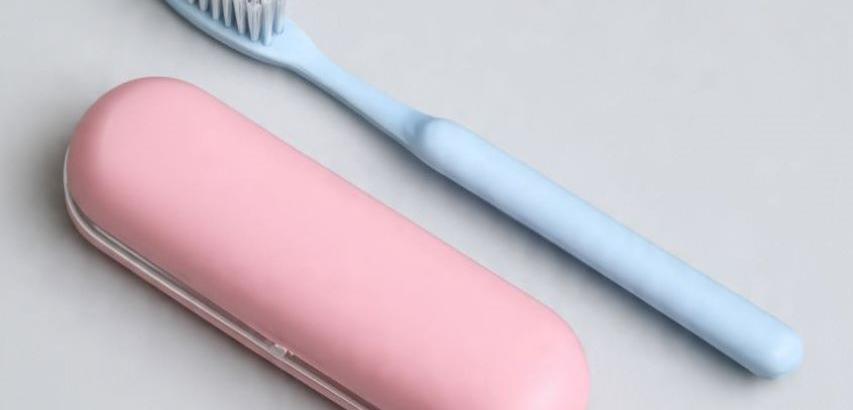A Toothbrush Cover, also known as a toothbrush cap or protector, is a small, usually plastic or silicone sheath designed to fit over the head of a toothbrush. Their primary marketed purpose is to protect the bristles from contamination by dust, insects, or other airborne particles in the environment, especially during travel or when stored in shared bathrooms.
The Perceived Benefits and Intended Use
Travel Protection: This is the most legitimate and widely accepted use. A cover prevents the bristles from coming into direct contact with surfaces inside a travel bag, suitcase, or toiletry kit, which may harbor dirt and germs.
Barrier Against Gross Contaminants: In some environments (e.g., dormitories, shared bathrooms with poor hygiene), users may feel a cover protects their brush from visible, large-scale contaminants like splashed water, dust, or even pests.
Aesthetic and Organizational Appeal: Covers come in various colors and designs, allowing for personalization and helping families distinguish between brushes.
The Critical Drawback: The Moisture Trap
Despite their intended purpose, the most significant and scientifically supported criticism of toothbrush covers revolves around moisture.
The Perfect Environment for Microbes: A toothbrush cover, especially one that is airtight or used on a damp brush, creates a dark, warm, and moist enclosed environment. This is the ideal condition for the rapid growth and proliferation of bacteria, mold, and yeast.
Preventing Drying: The American Dental Association (ADA) explicitly recommends that toothbrushes be stored upright and in the open air to allow them to dry thoroughly between uses. Microorganisms thrive in moist environments; a dry brush is a less hospitable one. A cover directly counteracts this essential drying process.
What Does the Science Say?
Studies and dental health professionals consistently advise against the regular, daily use of toothbrush covers for the following reasons:
Bacterial Proliferation: Research has shown that covering a damp toothbrush leads to a significantly higher bacterial load on the bristles compared to leaving it exposed to air. The cover doesn't "protect" the brush; it incubates the microbes that are already present.
Source of Contamination: The microorganisms growing under the cap can include not just common environmental bacteria but also viruses and fungi. When you place this contaminated brush in your mouth, you are potentially introducing a high concentration of microbes, which is counterproductive to oral hygiene.
Cross-Contamination: In a shared setting, if the cover itself touches a contaminated surface and is then placed on the brush, it can become a vector for transferring germs directly to the bristles.
Best Practices for Toothbrush Hygiene (According to the ADA)
Instead of relying on a cover, these practices are far more effective for maintaining a clean toothbrush:
Rinse Thoroughly: After brushing, rinse the toothbrush thoroughly with tap water to remove all toothpaste and debris.
Store Upright and Air-Dry: Store the brush in an upright position in a holder that allows for maximum air circulation. Do not let it touch other brushes.
Avoid Closed Containers: Do not store your toothbrush in a closed container regularly. If you must use a cover for travel, ensure the brush is completely dry before putting the cap on.
Replace Regularly: Replace your toothbrush (or brush head for electric models) every 3-4 months, or sooner if the bristles become frayed.
No "Disinfecting" Gimmicks: Avoid DIY disinfecting methods like microwaving or putting the brush in the dishwasher, as these can damage the brush. Simply rinsing and air-drying are the most effective and safest methods.
When is it Okay to Use a Cover?
The only scenario where a toothbrush cover is recommended is for short-term travel. Even then, follow these guidelines:
Ensure the brush is as dry as possible before covering it.
Remove the cover as soon as you reach your destination and allow the brush to air-dry.
During your stay, do not keep the cover on the brush; store it upright in the open air.
Use a ventilated travel case, if possible, which offers some physical protection while still allowing for some airflow.
While Toothbrush Covers are marketed as a hygiene product, the consensus among dental professionals is that their regular use is detrimental to toothbrush cleanliness. By trapping moisture, they create an incubator for microorganisms, potentially leading to a more contaminated brush than one stored openly.
For daily home use, the best practice is to simply rinse your brush thoroughly and store it upright in the open air to dry. A toothbrush cover should be viewed strictly as a short-term travel accessory, not a daily hygiene solution. True oral hygiene is achieved through proper brushing technique, regular brush replacement, and correct storage—not by sealing moisture and microbes against the bristles.
 |  |  |
 |  |  |
